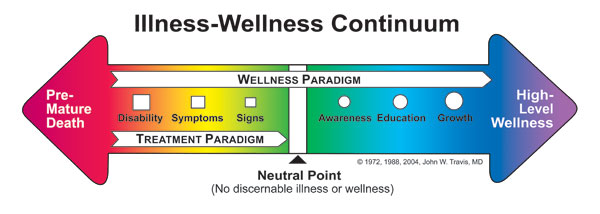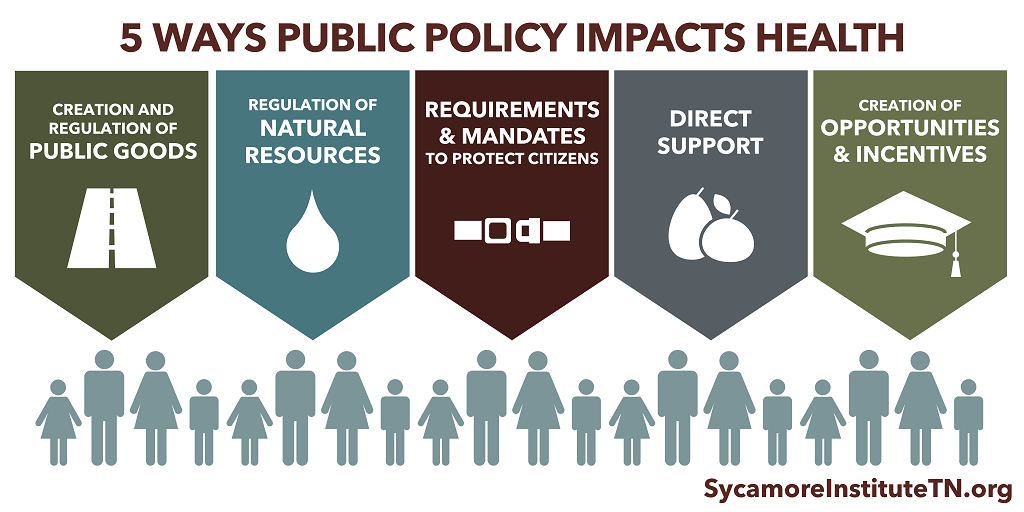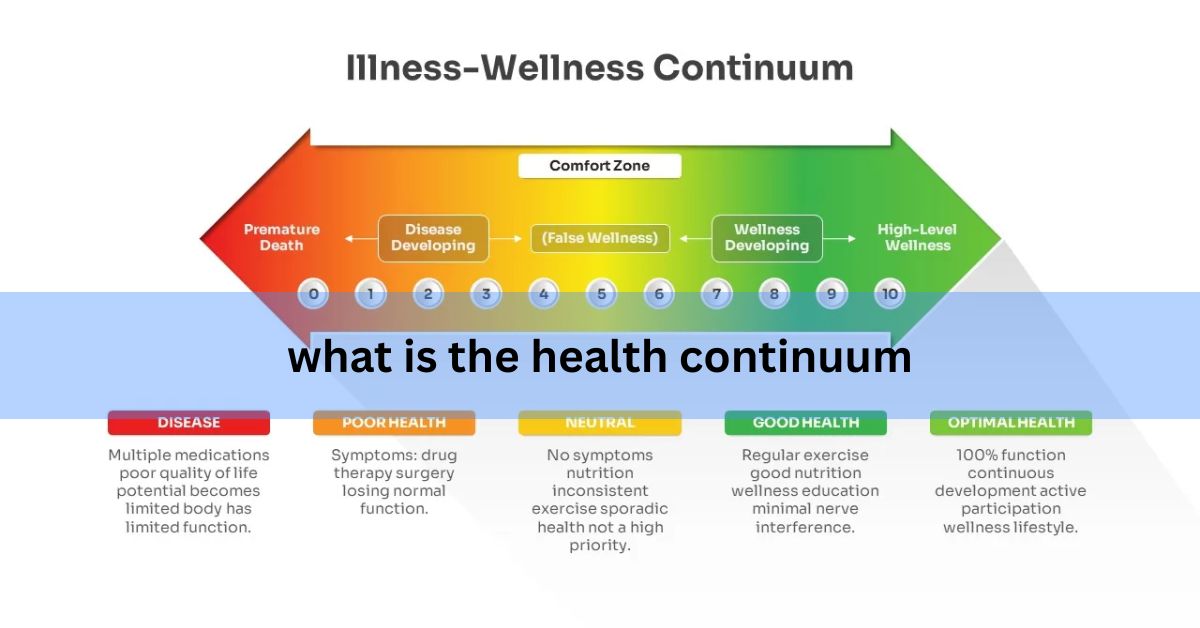What Is the Health Continuum – A Deep Dive into Holistic Well-being!
Understanding health in today’s modern society requires a broader perspective than ever before. One of the most enlightening and practical models for viewing personal health is known as the health continuum. Rather than seeing health as a static state of either “sick” or “well,” the health continuum helps us recognize that wellness is a dynamic process—one that fluctuates throughout life depending on choices, circumstances, genetics, and environment.
In this in-depth exploration, we will discuss what the health continuum is, why it matters, and how individuals can use this model to better navigate their own journey toward improved health. This article is designed to provide clear, detailed insights for people in the USA and beyond, focusing on real-world relevance, practical applications, and long-term health improvement strategies.
The Definition of the Health Continuum:
The health continuum is a conceptual model that illustrates a range of health status levels, from extreme illness on one end to optimal wellness on the other. Rather than defining health as an absolute—either you’re healthy or you’re not—the continuum represents health as a fluid, ever-changing state influenced by physical, mental, emotional, social, and even spiritual factors.
A person’s position on the health continuum can change daily or over time depending on lifestyle decisions, access to healthcare, habits, stress levels, emotional resilience, and more. The concept emphasizes that each of us has control over certain aspects of our health and can move toward higher levels of wellness through informed, conscious choices.
The Illness-Wellness Continuum: A Closer Look

The most recognized version of the health continuum is the illness-wellness continuum, first introduced by Dr. John W. Travis in the 1970s. At one extreme is premature death caused by chronic disease, disability, or poor lifestyle. At the other end is high-level wellness—characterized by vitality, purpose, creativity, and a balanced life.
People often assume health is only the absence of disease. But on the continuum, someone might be disease-free and still experience poor health due to poor nutrition, inactivity, high stress, or emotional imbalance. Similarly, someone managing a chronic illness might live at a higher wellness level by adopting proactive habits that optimize their quality of life.
The Dynamic Nature of Health:
Health is not a fixed state. A person who feels mentally energized and physically strong today might face a setback tomorrow due to stress, injury, or illness. The health continuum acknowledges this dynamic nature, encouraging ongoing self-awareness and effort.
Every choice we make either moves us toward the wellness end or the illness end of the continuum. Skipping meals, smoking, lack of exercise, unmanaged stress, and substance abuse shift us leftward toward illness. In contrast, healthy eating, regular physical activity, social connection, emotional regulation, and preventive healthcare shift us rightward toward wellness.
The Six Components of the Health Continuum:
Health is not simply the absence of disease—it is a dynamic and ongoing process influenced by a wide variety of factors. The Health Continuum is a model that represents a person’s overall wellness on a spectrum, ranging from high-level wellness to premature death. Within this continuum, there are six core components that interact and affect one’s ability to live a balanced, healthy life.
These six components are:
- Physical Health
- Emotional Health
- Social Health
- Mental/Intellectual Health
- Spiritual Health
- Environmental Health
How Lifestyle Choices Influence Your Position on the Continuum?
The most empowering feature of the health continuum is the idea that your daily actions can directly influence your overall health. While some factors like genetics and environment may be beyond control, many components of wellness—like diet, sleep, and relationships—are within reach.
Nutrition plays a foundational role in where you fall on the continuum. A diet rich in whole foods, fiber, healthy fats, and lean proteins fuels the body and mind. Similarly, regular physical activity, even in moderate forms like walking or yoga, supports cardiovascular, musculoskeletal, and mental health.
Emotional wellness also plays a key role. Chronic stress, unresolved trauma, or poor coping mechanisms can push a person toward illness, even if their physical health seems fine. Conversely, building resilience, practicing gratitude, and seeking mental health support are wellness-driving behaviors.
The Role of Preventive Healthcare in Shaping Health Outcomes:
Preventive healthcare—such as routine screenings, immunizations, and regular check-ups—helps individuals detect potential health problems before they become serious. This is essential to moving rightward on the continuum.
Rather than waiting for symptoms or emergencies, those committed to wellness make proactive use of healthcare systems. They ask questions, monitor key health indicators (like blood pressure or cholesterol), and view doctors not just as fixers of illness, but as partners in long-term well-being.
Also Read: Is Gin Good for Health – A Comprehensive Look at the Evidence!
Emotional and Social Wellness on the Health Continuum:
A person cannot achieve high-level wellness if their emotional or social life is unhealthy. Emotional well-being involves recognizing, expressing, and managing feelings in constructive ways. Social wellness reflects the quality of your relationships and your sense of connection with others.
Isolation, unresolved anger, toxic relationships, and lack of emotional expression can all slide a person toward the illness side of the continuum—even if their body is physically fine. On the other hand, strong support systems, positive friendships, and healthy emotional habits contribute to holistic wellness.
Spiritual and Intellectual Wellness as Pillars of Total Health:
True wellness also includes intellectual and spiritual dimensions. Intellectual wellness encourages lifelong learning, creativity, and problem-solving, all of which stimulate mental agility and purpose. Spiritual wellness relates to a person’s values, purpose, and connection to something greater than themselves—whether religious or secular.
Neglecting these areas can lead to stagnation or existential dissatisfaction. Cultivating them, on the other hand, fosters resilience and a deeper sense of fulfillment, moving you further toward optimal health on the continuum.
Using the Health Continuum as a Self-Assessment Tool:
One of the most useful applications of the health continuum is using it for personal assessment. Ask yourself regularly: Where am I right now on the continuum? What actions have I taken this week that moved me toward illness—or toward wellness?
By becoming more conscious of your decisions and their impact on your health trajectory, you empower yourself to take small, consistent steps toward better well-being. The continuum isn’t about being perfect; it’s about progress.
How Public Health and Policy Affect the Health Continuum?

On a larger scale, the health continuum is not just personal—it’s societal. Access to clean air and water, nutritious food, safe housing, quality healthcare, and education all influence a population’s placement on the continuum.
Public health policy plays a vital role in promoting wellness for communities and correcting health disparities. Individuals and families benefit when communities are designed with walkability, food access, mental health resources, and preventive care in mind.
The Future of Health Through the Continuum Lens:
In the future, healthcare systems and personal health approaches are likely to adopt even more wellness-centered models. From wearable tech that tracks sleep and activity to workplace wellness programs and stress-reduction apps, the momentum is shifting toward prevention and holistic care.
Understanding the health continuum prepares us to be active participants in this transformation. Whether through digital tools or lifestyle changes, we each have the opportunity to continuously move closer to high-level wellness—regardless of age, background, or starting point..
FAQ’s:
1. What is the health continuum in simple terms?
The health continuum is a model that represents a person’s overall health as a spectrum ranging from illness to optimal wellness, influenced by daily choices, habits, and circumstances.
2. Why is the health continuum important?
It helps people understand that health is not black or white—sick or healthy—but an ongoing process. This awareness encourages personal responsibility and preventive care.
3. Can a person be disease-free but still low on the continuum?
Yes. Someone without illness may still experience poor emotional, social, or mental health, placing them on the lower end of the wellness spectrum.
4. What factors move a person toward the wellness end of the continuum?
Healthy eating, regular exercise, stress management, meaningful relationships, preventive care, and emotional self-regulation are key factors.
5. How can I assess my position on the health continuum?
Self-reflection is the first step. Consider your physical, emotional, mental, social, and spiritual well-being. Are your habits supporting long-term health?
6. Is it possible to move back and forth on the continuum?
Absolutely. Life events, illnesses, stress, and choices can shift your position at any time. The goal is to stay mindful and correct your course as needed.
7. How does the health continuum apply to mental health?
Mental health plays a huge role. Emotional awareness, resilience, and mental health support can significantly improve your position on the continuum.
8. Does everyone have the same access to wellness?
Unfortunately, no. Social determinants such as income, education, healthcare access, and environment influence a person’s ability to reach optimal wellness.
Closing Remarks:
The health continuum is more than a theoretical model—it’s a framework for life. By viewing health as a journey with endless opportunities for movement and improvement, individuals become more mindful, proactive, and empowered. Every decision, from what you eat to how you manage stress, shapes your direction on this continuum. While setbacks are inevitable, forward progress is always possible with the right mindset and support.
Read More:






